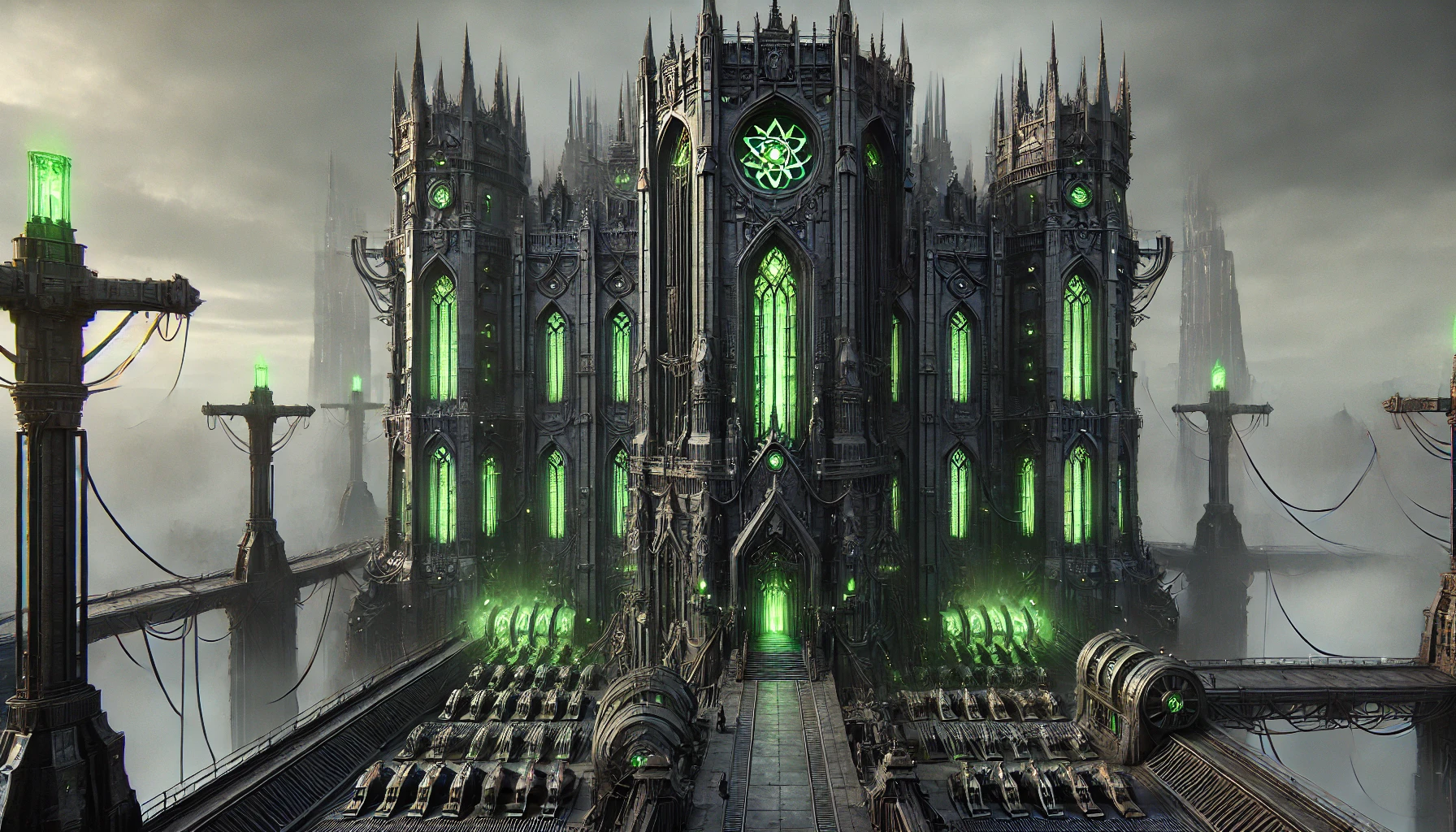Mortis Energy Corporation
Purpose / Function
Architecture
The Mortis Energy Corporation (MEC) building is a stark yet imposing structure that embodies the city’s eerie yet practical ethos. The architecture is a blend of gothic and industrial styles, with a functional yet ominous design that looms over the Business District.
- Exterior Features:
The building is constructed from a dark, matte material resembling reinforced black stone, accented with veins of glowing green necromantic energy that pulse faintly at night. Large, spiked towers rise at each corner, crowned with rotating necromantic beacons that serve both as a power source indicator and a symbol of the city's reliance on the undead. The central entrance is flanked by intricately carved statues of bound zombies, symbolizing the building’s purpose and the city’s philosophy of control and utilization. - Windows and Lighting:
Narrow, elongated windows with green-tinted panes dot the facade, resembling slits in a fortress. These windows allow minimal natural light, creating an atmosphere of secrecy and focus. At night, necromantic lanterns emit a soft, eerie glow, illuminating the building with an otherworldly aura. - Interior Design:
Inside, the building is equally utilitarian and foreboding. The walls are lined with smooth black stone, accented with glowing runes that channel energy to the generators. High-vaulted ceilings give a cathedral-like feel to the main generator hall, where rows of treadmills, cranks, and mills operated by zombies are arranged in perfect symmetry. Observation platforms overlook these operations, accessible via wrought-iron staircases and walkways.
This architectural marvel stands as both a practical facility and a cultural monument, encapsulating the settlement's fusion of survival, ingenuity, and its dark embrace of the undead.
Defenses
Zombie-Integrated Defenses
- Bound Zombie Guards: The perimeter is patrolled by zombie guards enhanced with necromantic spells for heightened strength and obedience. These zombies are controlled by enchantments that make them immune to being turned against the settlement.
- Corpse Traps: Special necromantic traps can summon skeletal hands from the ground to restrain intruders, buying time for the guards to respond.
Magical Defenses
- Warding Runes: The building is etched with powerful runes that repel hostile entities, including rogue undead, enemy necromancers, and magical projectiles. These runes are maintained and periodically recharged by MEC’s in-house necromancers.
- Energy Barriers: A secondary defense system deploys necromantic energy fields around critical areas during an attack, creating impassable barriers.
Technological Defenses
- Kinetic Turrets: Automated turrets powered by the facility’s kinetic energy store are stationed at key points, capable of launching enchanted projectiles that disable or destroy threats.
- Surveillance Network: The building employs a combination of necromantic scrying and conventional cameras to monitor all activity in and around the structure.
Emergency Protocols
- Zombie Swarm Protocol: In the event of a large-scale attack, an emergency signal activates dormant zombies within the facility, converting them into a defensive swarm to overwhelm invaders.
- Evacuation and Containment: Key personnel can retreat to secure chambers reinforced with additional necromantic shielding, while sections of the building can be magically sealed to contain threats.
From Death, We Thrive.
Mortis Energy Corporation (MEC) stands as a cornerstone of the settlement’s innovative approach to survival, seamlessly blending practicality with the macabre ethos of its society. Located in the bustling Business District, MEC specializes in harnessing the kinetic energy generated by zombies to power the city’s infrastructure. Through a network of zombie-operated treadmills, mills, and cranks, the corporation provides a steady and renewable energy source to homes, businesses, and public utilities. The company's facilities are a hub of activity, with engineers and necromancers working together to refine their methods and expand their reach.





Comments